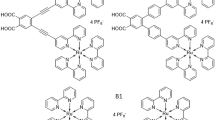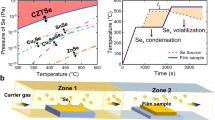Abstract
MR. THORNE BAKER'S observations on the enhanced light sensitivity of selenium cells actuated by alternating, instead of direct, current (NATURE, June 19, p. 858), are possibly related to some phenomena investigated recently by Mr. J. W. Avery and myself. We have found that selenium cells of a particular type (those made to the design of Prof. H. Thirring) display, when used in the ordinary way. with direct current, appreciable and persistent polarisation effects. Almost accidentally it was discovered that this polarisation disappeared as a consequence of prolonged exposure of the cell to the operation of a drying agent. By the same process the ‘dark’conductance of the cell was reduced in the proportion of about 4 to 1, while the ‘light’ conductance was scarcely altered. The dried cell had thus become much more sensitive to light. We have attributed both the polarisation observed and a large part of the “dark” conductance of the undried cell to the presence of a film of water in parallel with the selenium between the electrodes, and our observations agree quantitatively with this assumption.
This is a preview of subscription content, access via your institution
Access options
Subscribe to this journal
Receive 51 print issues and online access
$199.00 per year
only $3.90 per issue
Buy this article
- Purchase on SpringerLink
- Instant access to full article PDF
Prices may be subject to local taxes which are calculated during checkout
Similar content being viewed by others
Author information
Authors and Affiliations
Rights and permissions
About this article
Cite this article
RANKINE, A. The Sensitivity of Selenium Cells. Nature 118, 13 (1926). https://doi.org/10.1038/118013b0
Issue date:
DOI: https://doi.org/10.1038/118013b0



